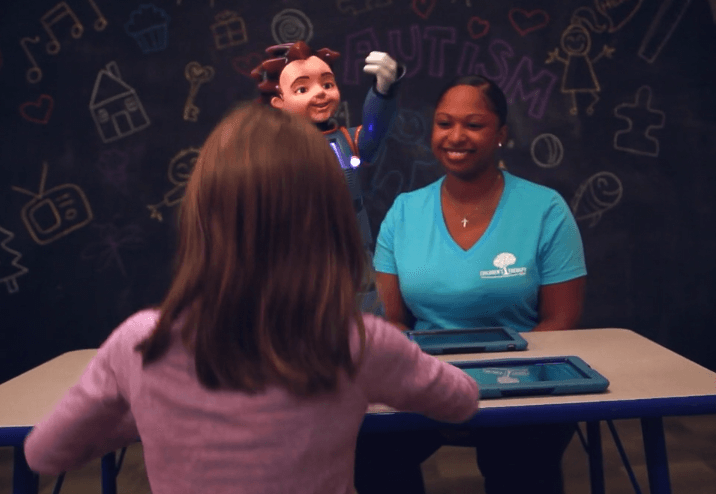Developing social skills can be difficult for children with autism, and making friends can prove to be a challenge. A robot named Milo is here to help with that.
Milo is a human-like robot that was developed to assist children with autism in learning how to interact with others. The robot can walk, talk, smile and frown in a human manner. However, the creators stress that he is not a toy. He is, instead, a learning tool that can help autistic children perform better in a classroom.

Introducing Milo to autistic children provides a way for them to practice interaction skills on a subject that never gets tired or upset. Instead, Milo “consistently delivers lessons in a way that learners with ASD respond to.” He is currently in over 250 schools, but the creators of this technology hope to increase that number exponentially by the end of the year, making Milo a classroom staple in 2,000 schools nationwide.
RoboKind, a robotics company out of Texas, developed Milo and the accompanying curriculum using research compiled from over 30 years. Pamela Rollins, associate professor at the School of Behavioral and Brain Sciences at the University of Texas in Dallas, consulted the company to provide valuable insight into the creation of Milo.
Related: ‘Sesame Street’ Welcomes First Muppet With Autism
“It’s not like we’re trying to take away their autism,” she said. “We’re just trying to have them function in an environment that they will typically need to go to because they’re human beings.”

The goal of the curriculum is to deconstruct common social situations, allowing the children to understand them and act accordingly. By breaking them down into plain language, Milo gives children the chance to practice appropriate responses. Rollins uses the example of meeting someone and saying hello: “When you say hello to someone you look, smile and say hi.” This behavior may not come naturally to a child with autism, but practicing with Milo helps them get there.
Learning social skills from a robot may seem odd, but for children with autism, it can provide a unique experience that is more predictable and engaging.

“Sometimes children with autism can connect better to things other than human beings. Sometimes they connect better to animals. That’s why we’ve been using pets and dogs for children with autism,” said Dr. Stephanie Hines, assistant professor at the Oakland University William Beaumont School of Medicine in Michigan and head of Developmental and Behavioral Pediatrics at Beaumont Children’s Hospital.
Working with Milo is recommended for 30 to 60 minutes, three times a week. The cost of the robot and the curriculum comes to about $5,000. Approximately 1.5 percent of children are placed on the autism spectrum, with annual education costs at an average of $20,000 per child. The creators argue that Milo is a worthy investment, as he makes learning more effective.
Related: Tapeworm Therapy Helps Boy With Autism
Marissa is a health and fitness writer from the Tampa Bay area. In addition to researching the latest trending topics, she enjoys instructing kickboxing classes and posting incessantly to her Instagram account.


![How To: ‘Fix’ Crepey Skin [Watch]](https://cdn.vitalupdates.com/wp-content/uploads/2017/05/bhmdad.png)












